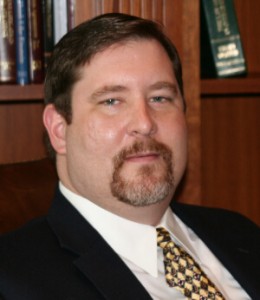 Software is now and will remain patentable in the United States. Software patents have been vilified by many, but they have been granted by the United States Patent and Trademark Office and upheld in federal courts across the United States.
Software is now and will remain patentable in the United States. Software patents have been vilified by many, but they have been granted by the United States Patent and Trademark Office and upheld in federal courts across the United States.
The Patent Act specifically envisions that some software must be patent eligible. For example, the America Invents Act (AIA) prohibits tax strategies from being patent eligible, but specifically says that this tax strategy prohibition does not apply to software that embodies a particular strategy. Furthermore, also as a part of the AIA, Congress created covered business method review as a new form of post grant procedure to challenge at least some issued software patents. Had Congress believed that software were not patent eligible, neither provision would have been enacted as part of the AIA; instead Congress would have merely statutorily prohibited software patents. Given that they statutorily prohibited tax strategy patents, it seems that Congress well understands how to wield that power when they want. Thus, software is patent eligible.
What has changed over the last several years, however, is the amount of detail that must go into a software patent application in order to satisfy the adequate description requirements under US patent law. So don’t listen to anyone who tells you software cannot be patents in the United States; it certainly can, but it isn’t as easy as it used to be and patent examiners frequently are predisposed to want to reject applications. If you give them a reason to reject you, they will; so thorough preparation in advance of filing and a complete and comprehensive disclosure are necessary.
A naked description that merely discusses process steps, without more, does little to explain to the computer programmer what generally needs to be done and leaves the computer programmer to figure out the implementation. Such a disclosure is not a recipe for success from a coding perspective and is absolutely not likely to succeed at the Patent Office.
While a patent application does not need to be a blueprint, it does need to direct and it should envision not only the optimal path, but should embrace checks and balances that reflect that the computing power of the end user will be less than the computing power of the machine running the process. Therefore, what is essential to the patent process, and likely to the successful completion of the development of software, is to have a design document that lays everything out for the programmer and takes into account the human element. You essentially want the programmer to be a translator. You want them to be able to take your design document and code it up into whatever language they choose, but you don’t want them making choices. You want to retain mental control over the invention, which translates into you being the conceiver and the programmer being the reducer to practice who follows your requirements.
Since the Supreme Court decided Bilski, the machine-or-transformation test has become the de facto test for patent eligibility…a “safe harbor.” If you satisfy the machine-or-transformation test, then you should have a patentable invention, although the PTAB decision in SAP v. Versata does call this into question. Still, the Supreme Court has said that the machine-or-transformation test is an important clue to patent eligibility, and virtually everyone who is being at all objective recognizes that the PTAB was wrong in SAP v. Versata. If you ignore all the tangible, conventional items, like they say is necessary, then nothing is patent eligible because everything is a combination in some way of tangible, conventional items. Fail to satisfy the machine-or-transformation test and you may have a patentable invention, but there is not yet an example of a computer-related process that failed the machine-or-transformation test and was found to be patentable.
To be patentable subject matter, the machine must impose a meaningful limit on the process claim’s scope, and the use of the machine must involve more than insignificant “extra-solution activity.” Thus, the claimed process must be more than “for use with a machine,” and must truly require implementation of the method steps by and through a machine.
Of course, the law as it applies to the patent eligibility of computer-implemented processes is in flux and likely to go through a variety of twists and turns before it settles down. When all is said and done, software will be patent eligible. Thus, decisions now not to pursue patents based on the schizophrenic rules of various tribunals is a mistake. Likewise, it is a mistake to think that filing a generalized description of the innovation is likely to be successful.
Tags: computer software patents, patent, patents, Software, software patent, software patentability, software patents




You share in the PLI Practice Center community, so we just ask that you keep things civil. Leave out the personal attacks. Do not use profanity, ethnic or racial slurs, or take shots at anyone's sexual orientation or religion. If you can't be nice, we reserve the right to remove your material and ban users who violate our Terms of Service.